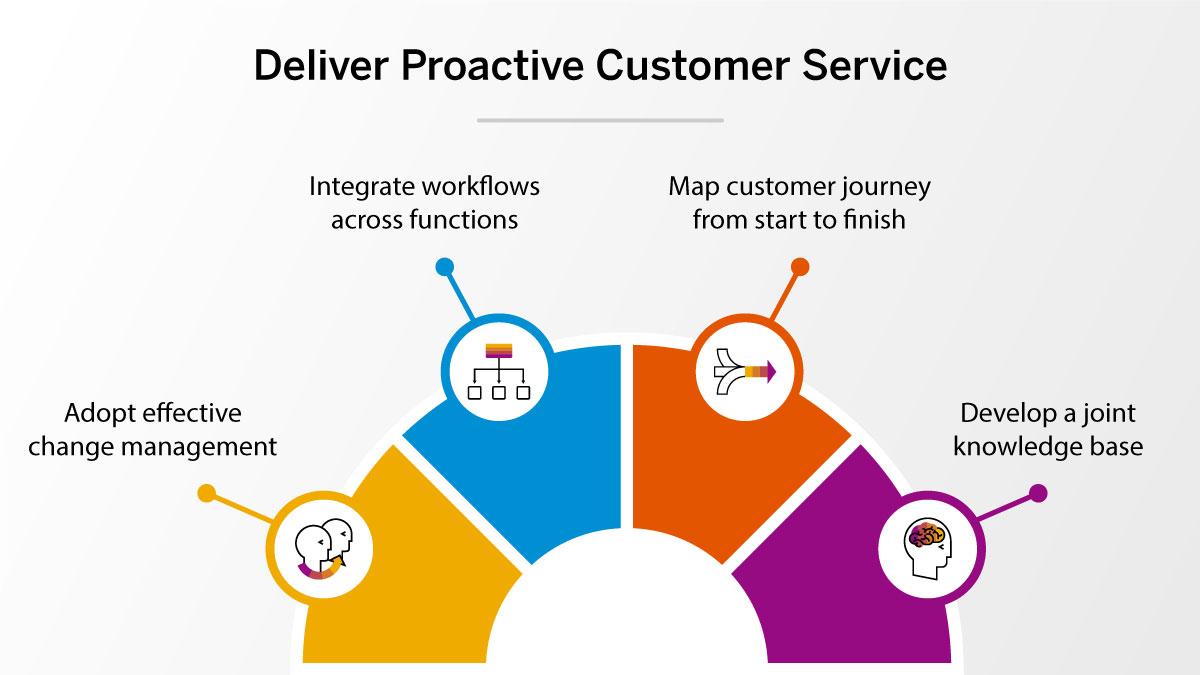Ever tried getting a refund on your credit card spends because a transaction didn’t go through? For most customers, this experience can be frustrating. Umpteen follow-up calls, confusing automated self-service options, and poor responses from inexperienced agents are often memories associated with such instances. Poor customer service is very often a deal-breaker for customers. In fact, 67 percent have ended a business relationship due to a poor customer experience.
The disruptions caused by the pandemic have clearly shown that customers today, especially millennials, are not tolerant of brands that give poor customer service, and wouldn’t think twice to do the switcheroo. According to McKinsey, 75% of US consumers switched brands between March and August 2021. The millennial cohort – the largest and most influential of them all – recorded the highest churn rate of 90%.

Research shows that Millennials and Gen Z are driven not just by convenience and value but also by the overall brand experience. In other words, they expect personalized service tailored to their unique needs. This includes greater choice in when and how they communicate with brands.
With the rapid growth of omnichannel marketing, they have little incentive to stick to a certain company that they don’t find responsive enough. All it takes is one poor experience for consumers to switch brands. From retail to banking, a high churn rate is a common theme today. It is here that customer care has a considerable role to play.
Businesses are changing their perspectives on their core priority – retaining customers and growing their customer base. And they realize that the old ways of attracting or retaining customers no longer work. For example, businesses now understand that discounts and offers alone aren’t enough to attract customers, given shrinking margins and a seismic shift in customer loyalties.
The traditional customer care model has evolved considerably over the last two decades. Most major brands now run omnichannel contact centers that manage customer interactions across touchpoints, replacing the single-purpose call center that focused on voice calls. However, most companies have a reactive approach to customer service. In other words, they try to resolve problems only after a customer has reported them. Another issue is the standard time for follow-ups, which remains two to three business days. And it persists even though contact center agents interact directly with customers and often have deep insight into their pain points.
Increasingly, customer-centric brands know the pitfalls of such a model all too well. They choose to tread a markedly different path in the times of omnichannel and personalized experience that customers are used to and demand. Brands are taking the initiative instead of staying reactive, and this starts from visualizing the customer journey to anticipating customer needs and delivering services and solutions proactively.
What is Proactive Customer Service?
Here’s a ‘then versus now’ comparison to put things into perspective:
March 2020: From e-commerce to healthcare, customer service teams witnessed a massive surge in contact volumes almost as soon as the lockdown was announced, and the world moved to the online space. However, many customers were left frustrated because of long hold times and poor follow-ups. This caused uncertainty in the minds of consumers and led to a spike in escalations.
Now: Businesses are introducing proactive customer service practices designed to detect and resolve issues before customers even become aware of them. Leveraging the power of data and analytics, customer service teams are optimizing IVR options, automating primary responses, and collecting feedback in real time. The impact has been significant; it has led to substantial improvements in resolution time and improved customer experience.
Proactive customer service can help businesses differentiate themselves from the competition and increase Customer Lifetime Value (CLV). Satisfied customers can, in turn, advocate your brand to others most authentically and cost-effectively.
How Can Businesses Deliver Proactive Customer Service?
The truth is that most businesses already have the building blocks in place for delivering proactive customer service. For example, since the pandemic, many companies have adopted cloud-based contact center management systems that are inherently scalable and quickly adapt to specific process requirements. These platforms also come with built-in integration support for plug-and-play compatibility with third-party enterprise apps.
However, complex inter-team dynamics – for example, between marketing, sales, and customer support departments – often create hurdles in this process. There is usually a significant amount of overlap between different processes. Turf battles between teams make it impossible to map the customer journey effectively and drive collaboration. Therefore, effective change management is a critical first step to delivering world-class customer service.
Integrating workflows across functions like sales, marketing, product development, and customer service can help businesses build an intuitive understanding of the customer journey, enhancing customer engagement and loyalty. To do this, individual functions must develop a shared vision for customer experience.
Mapping the customer journey from start to finish can help each team play to its strengths, ensuring seamless customer handoffs across channels. Customer service managers should also strive to better understand the processes followed by sales and marketing – especially about product returns, refunds and discounts. This has the potential to impact service levels positively while reducing escalations.
For example, frontline customer service agents often transfer customer calls to their colleagues in marketing or sales for in-depth information. The customer ends up spending a lot more time on the phone than they should have had to. By developing a joint knowledge base, teams from different departments can understand the context behind each other’s decisions and explain it to the customer.

Prioritizing Customer Experience Transformation
There are three major steps to consider when a business decides to take a customer-centric approach and transform the customer service journey. These are:
- Leveraging customer data
Most companies collect a vast amount of customer data on a daily basis by analyzing purchase history, survey data, and customer service interactions. This data plays a critical role in helping businesses identify customers’ current and future needs.
For example, Net Promoter Score and CSAT data can provide vital clues into how customers perceive a product or service. Customer service teams can identify customers at risk of churning by correlating this data with average order value or usage rate. If the customer in question belongs to the high-value segment, customer service can work with product development to customize a product to better suit customer needs.
- 24×7 engagement is key
In the new normal, businesses have come under increased pressure to maintain service levels. Customer service teams have been unable to cope with increased volumes, resulting in a decline in CSAT. This is no surprise considering long hold times have historically been a major irritant for customers. Secondly, the non-availability of service due to time zone differences has the potential to alienate international customers. The truth is that cost constraints make it impossible for many small businesses to provide 24×7 support.
Poor response time on social media is another area of opportunity for most businesses. While the average response rate is 5 hours, studies show that customers expect a response in as little as an hour.
However, by integrating automated tools like chatbots and self-service portals, business can continue to support many customer requests without manual intervention. Companies can also analyze search data to discover what customers want and optimize FAQ content.
- Omnichannel customer support
Today’s digital native customers reach your brand through multiple touchpoints. It could be the website, online presence on social platforms (including Instagram and Facebook) or any of the e-commerce sites. So the customer journey isn’t linear, which means customer support should also be omnichannel.
These could range from self-service to an information-rich FAQs section on the website to a 24×7 support that could be an optimal mix of technology (bots) assistance and human assistance. Ensuring that customer service is omnichannel will give that edge in delivering service levels since your customer doesn’t have to wait till the beginning of working hours to get in touch.
- Metrics and training
At its heart, proactive customer service is a philosophy that stems from the values of an organization as a whole. Businesses that genuinely care for their customers put equal emphasis on quality interactions and efficiency. For example, average handle time is not enforced at the cost of accurate information or empathizing with a customer situation. On the contrary, agents are empowered to bypass procedures in the interest of customer satisfaction.
However, adequate checks and balances are in place to ensure that refunds and credits are granted only in deserving cases. Ongoing training and development are a key requisite to equip agents in order to serve customers proactively. Skills like active listening and probing for information can be considerably enhanced through regular coaching and mentoring. In addition, sharing best practices in escalation management can also go a long way in driving complicated cases to resolution.
- Pivoting on technology
Unlike earlier, customer service leaders these days can leverage technology to refine their customer service processes. For instance, technologies such as AI-enabled conversational intelligence platforms can help customer service leaders to understand how and where their agents need to refine their approach. Listening back to customer service conversations can help define best practices for service delivery. Top this off with soft skills training that help agents to lead conversations with empathy… and the customer service delivery process becomes an elevated, customer-first approach.
Remember, building customer service excellence is a long-term process. It is a better bet to implement changes to processes and systems incrementally, rather than rapidly doing it on a large scale. Proactive customer service is the bare minimum that customers expect from the brands they buy from. By aligning processes and people, this can allow companies to significantly improve profitability and growth and never lose a customer again.



